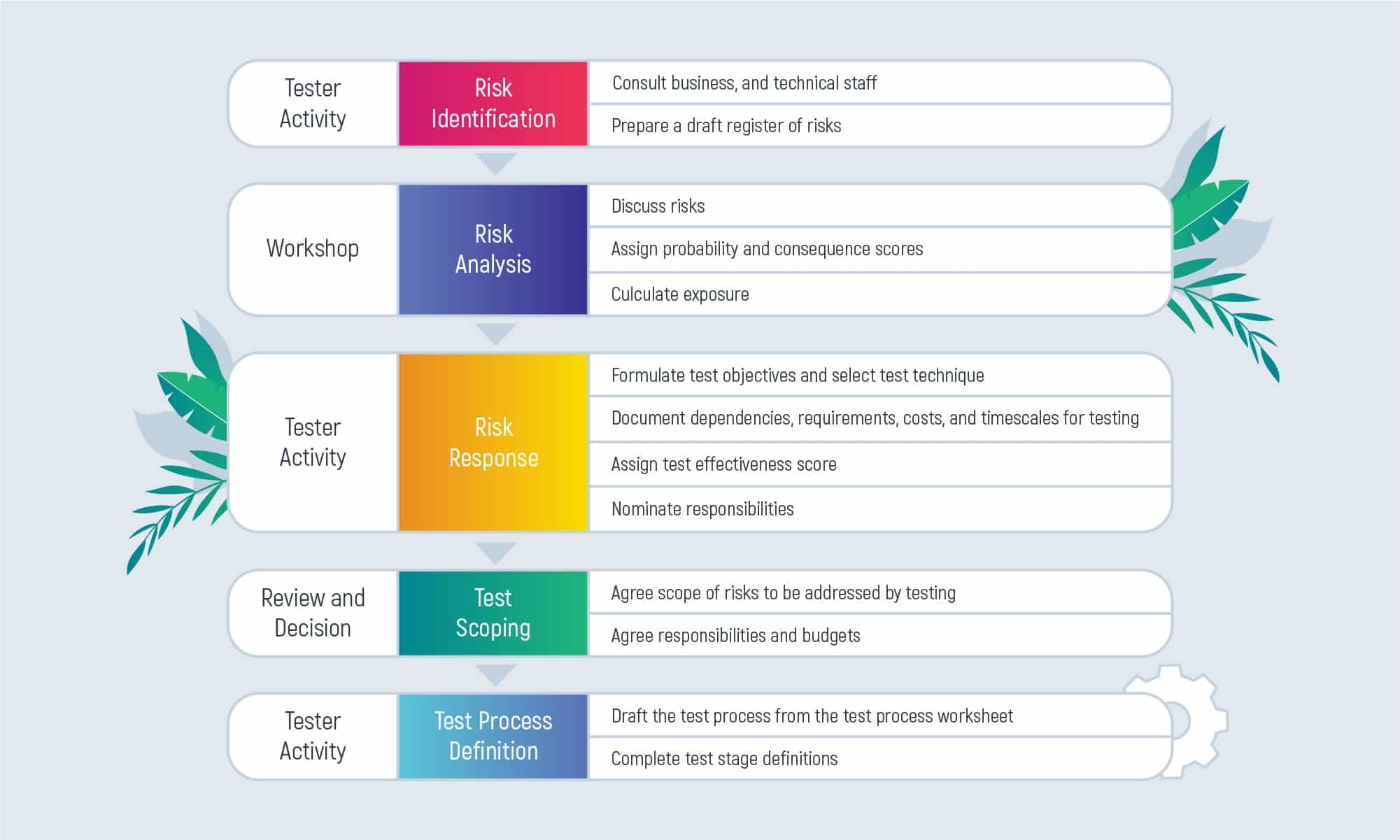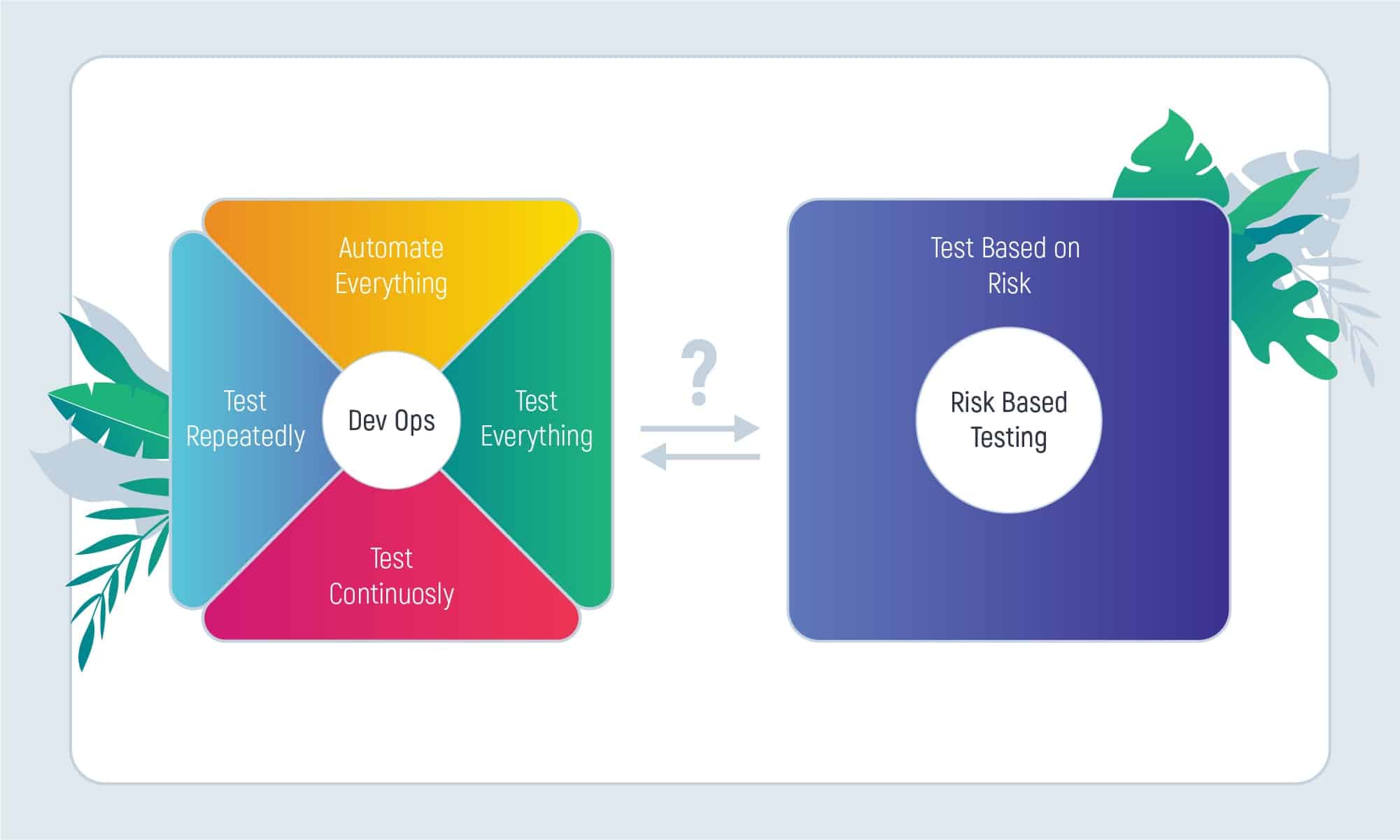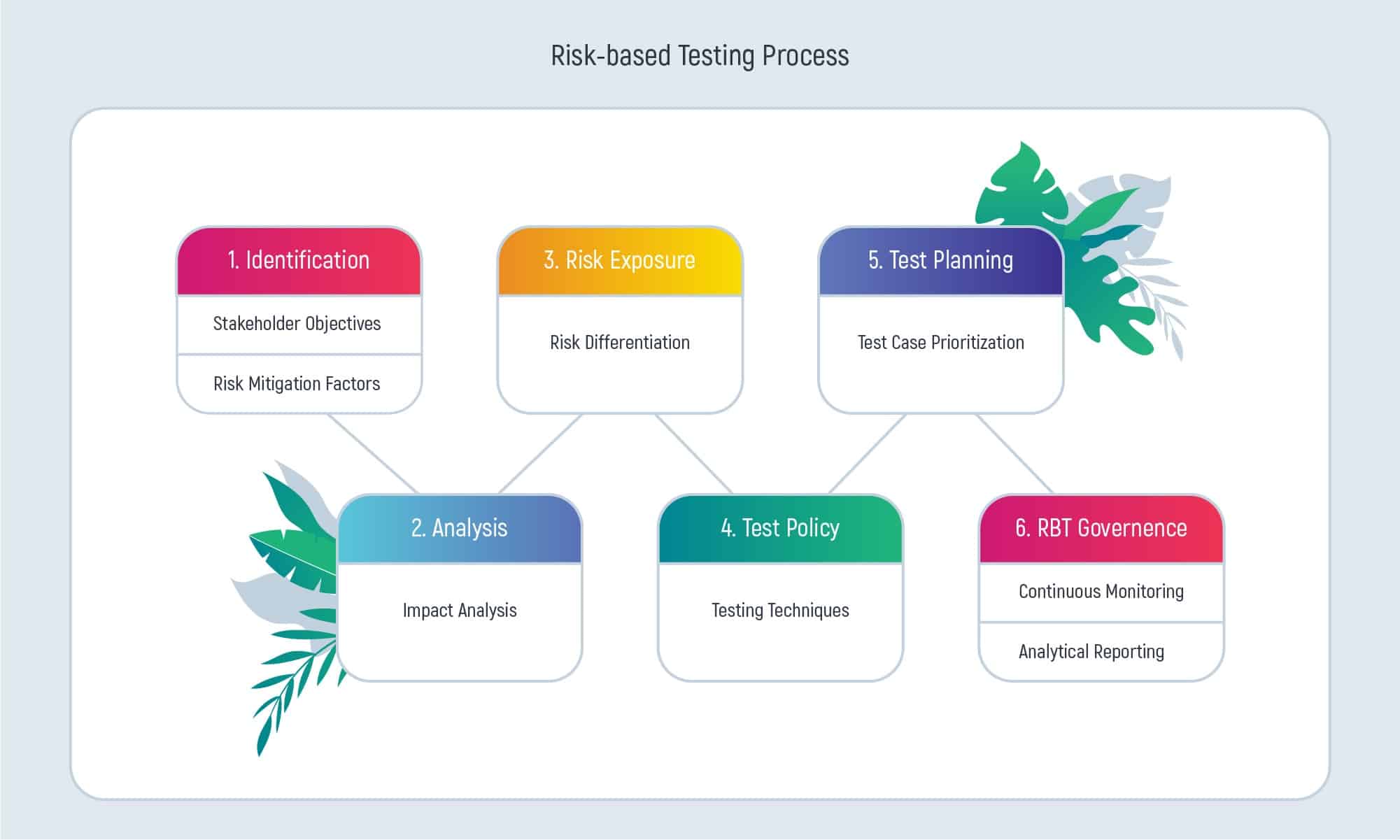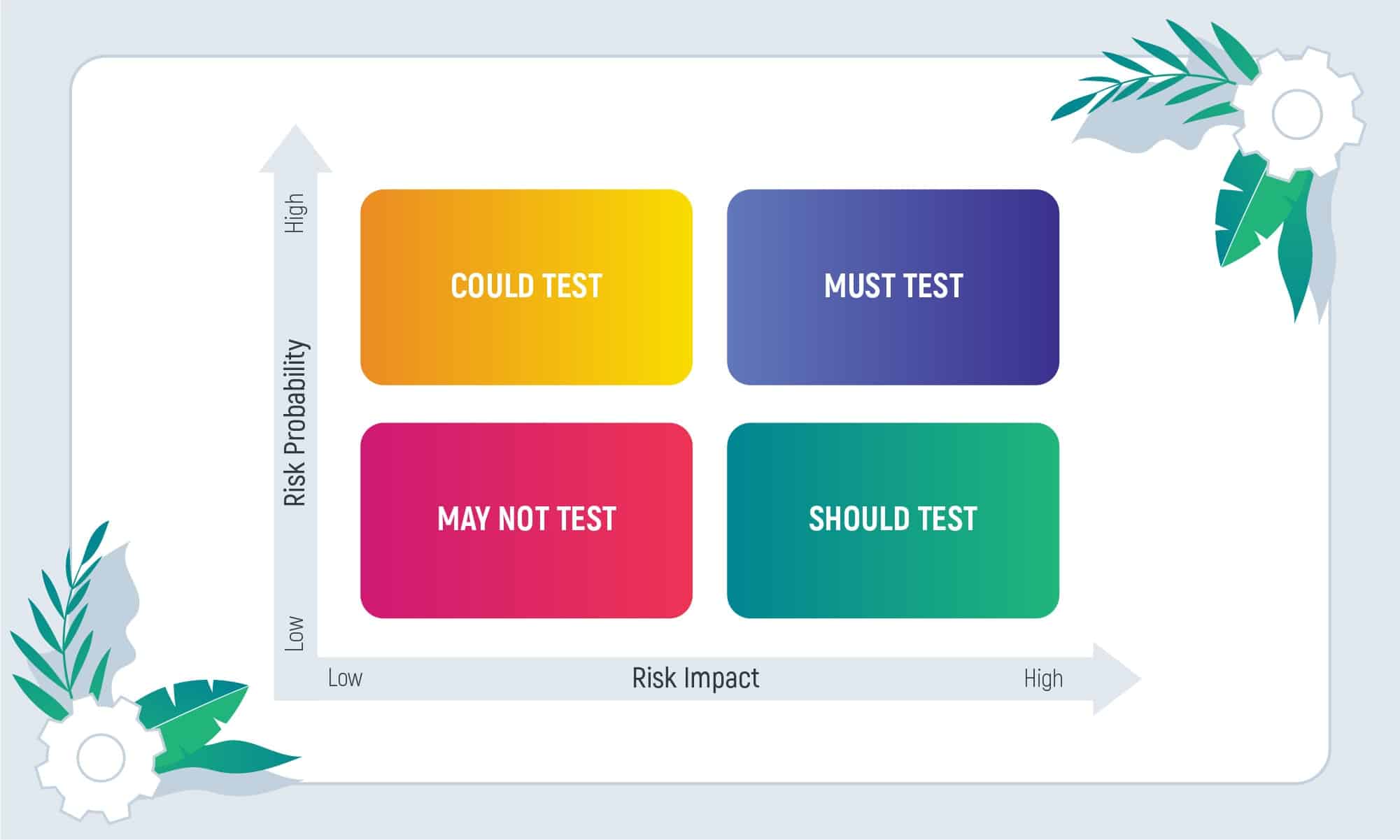Have you ever wondered if there is a risk of malfunction of your software? Did you ever think that something might go wrong and people will be affected? If you didn’t have a clue there are risky situations and the possibility of errors within a system, then it is time to learn some facts about risk analysis in software testing.
Explore the digital landscape confidently through Risk-Based Testing—a strategic software development approach: uncover its advantages in ensuring reliability, security, and optimal performance. Key takeaways include its vital role in addressing potential malfunctions for businesses of all sizes, its applicability in various methodologies (Agile, Waterfall, and DevOps), and common mistakes to avoid. Discover how Inoxoft leverages expertise in QA automation testing services to prioritize early and efficient risk-based testing, safeguarding software quality and functionality. Let's dive in!
- What are the Risk-Based Testing Approach Types?
- Product risk
- Project risk
- Process risk
- Why Might You Need Risk-Based Testing?
- The purpose of risk-based testing in Agile is to:
- What are the Advantages of the Risk-Based Testing Approach?
- 1. You increase focus on customers
- 2. Software quality enhances
- 3. Testing becomes more structured
- Risk-Based-Testing Strategy and Matrix
- What are the Mistakes in a Risk-Based Testing Approach?
- Inoxoft’s Steps and Use Cases in Risk-Based Testing
- 1. Identify product risks at 100%
- 2. Analyze the risks and set a priority hierarchy of software modules
- 3. Plan, design, and execute prioritized testing modules
- 4. Constantly monitor and review potential risks
- Consider Inoxoft Your Trusted Partner
To ensure timely risk identification, assessment, and mitigation,
choose Inoxoft QA automation testing services
What are the Risk-Based Testing Approach Types?
Risk-based testing approach is the assessment of the functionality of the software. This functionality has the highest impact on the probability of its failure.
The process of risk analysis in testing includes such activities as risk identification, risk analysis, risk response, test scoping, and test process definition.
There are three types of risk occurrence in software engineering. These are:
Product risk
Product risk becomes a major threat when there is a lack of requirements, the product is complex. And, also, when there is a constant challenge to meet the demand of the end functionality. Or, to meet the needs of potential users. And, this includes meeting the expectations of the product stakeholders.
Project risk
Project risk is based mostly on external issues. These enlist contract signing, delays on both sides, and personal problems. To add, there might be constraints that are not related to work and other similar issues.
Process risk
What can be at risk in a software development process? Mainly, planning, management issues, inaccurate project estimates, and delays. Ans, also, deadlines that cannot be changed, miscomprehension of project complexity, and other important things.
Why Might You Need Risk-Based Testing?
You might consider a risk-based testing strategy in three different practical cases:
- If your software is mission-critical
- If your iteration deadlines are rigid and Agile-based
- If there is an overdue development via the Waterfall methodology
What apps are mission-critical? Usually, the ones that involve critical financial transactions (e.g. a banking application). And, the ones storing, managing, and analyzing patient-critical information about their health (e.g. an EHR app in hospitals). These types of apps exist on various devices. They contain high-risk modules that should be tested appropriately.
To ensure the best testing methods, you may test according to Agile principles. What do you know about risk-based testing in Agile? Why is it so special? What are the risk-based testing approach examples?
Imagine, that your quality assurance team has difficulties setting up the right amount of time and effort for iterations. Here, it would be wise to depend on a risk-based testing approach in Agile. This testing strategy operates on a defined risk, which allows determining every testing goal easier.
Agile risk-based testing approach estimates testing efforts specifically to make the residual level of product risk lower before the software shifts into production. This approach helps in test analysis, planning, estimation, design, execution, and reporting results.
The purpose of risk-based testing in Agile is to:
- Create a method to discuss potential identified risks among the team members (i.e. testers, developers, and stakeholders);
- Meet the needs of both customers and developers with regard to the occurrence and control of the risks;
- Give out a budget and timeline managing criteria that helps in avoiding delays, and still, ensure the best quality of your software;
- Points out features that are top priority to customers. These features are transformed into testing requirements in the form of a hierarchy. They follow an audit.
To perform this type of testing in Agile it is best to use regression testing. The first testing will cover a partial regression test, which will go through a critical functionality. The second RBT test suit should be a full regression test with all the modules within the app.
What concerns Waterfall, you can use it only if the testing phase is too long. And your objectives are to make it shorter. For this reason, validate critical software modules before the development process is completed. The testing done during the development should, by all means, validate isolated software modules.
Another methodology to be used can be DevOps testing. It is like Agile in a way. DevOps focuses on customers and their genuine experience rather than defects solely. So, this principle helps to identify:
- areas of critical risk in the app;
- defects to fix them early.
What are the Advantages of the Risk-Based Testing Approach?
How would you know you are at an advantage engaging in the risk-based testing practice? Let’s speak about the advantages of risk-based testing that might be the main card up your sleeve. For example,
1. You increase focus on customers
The risk-based approach in software testing focuses more on potential critical risks that affect customers directly. So, this type of testing in Agile allows testing of specific features first. By doing so, your e-business performance will improve as well as user feedback.
2. Software quality enhances
Prioritization is what can enhance the quality of software. Focusing on risks that can damage the app’s performance more is quite what is needed. And, also, the most important features and functions have to be tested first. That will give you more confidence as to the software’s reliability.
3. Testing becomes more structured
There is also a plus in taking steps in risk-based testing. When everything is clear and predicted beforehand, it makes the testing process more defined. For instance, you can answer the questions about what to test? where to start from? and when to stop? faster. Especially, if the timeframes are set, test execution priority is established, and there are lots of test suit templates to carry out.
What makes these advantages Agile? Well, agility transforms into certain flexibility and breakdown of the testing scope into iterations, prioritized tasks, and so on. That’s done in the best interest of the software development environment. And, in a customer-centric approach.
Risk-Based-Testing Strategy and Matrix
Who is responsible for evaluating critical software risks? There are three key groups of people involved in the software development lifecycle. These are:
- Product owners, solution architects, SMEs
- Developers with a tech understanding of app dependencies
- QA testers
The risk-based testing methodology includes planning, design, and execution of testing. Everything is carried out according to the priority. But the main focus areas within the application are:
- Areas, where defects might occur 100%
- Functionality that is critical for the business
- Features and functions used often
- Functionality requiring security
- New changes in the application
These attributes are the key features of the risk-based testing matrix. And, also, you should keep in mind the following matrix-related things:
|
|
|
|
|
|
|
|
|
|
|
|
What are the Mistakes in a Risk-Based Testing Approach?
Nothing is perfect. And, even the perfect means to analyze potential risks in software can have flaws. But, you can avoid them and minimize the risk of their occurrence. For example:
- Do a risk-based analysis at the end of the product development! Always start testing early. Preferably at the planning stage;
- Determine the level of risk based on insufficient information! It will be incorrect and your project development risk will be at a higher level of risk occurrence;
- Focus only on high-risk features and functionality! Everything within a project is important. Focus on every aspect of the application;
- Conduct a risk-based assessment identifying only functional risks! Performance-based risks are to be taken into account as well;
- Work with a team with less knowledge in risk analysis than is needed! The team has to be aware of all potential risks. And, not miss anything due to their lack of experience or incompetency.
Inoxoft’s Steps and Use Cases in Risk-Based Testing
Every testing practice has to have a concrete plan and acceptance criteria to follow. So, we will speak about the risk-based testing roadmap. What is essential to include there? Let’s discuss the process of risk-based testing in detail.
The risk-based approach in testing should:
1. Identify product risks at 100%
All the team members involved in the risk assessment have to understand the application inside out to get acquainted with the probable risks. To do so, the team has to analyze the product’s requirements, and specifications of design, and go through the other documentation. Afterward, the team will be able to identify 100% of the risky functionalities there are.
2. Analyze the risks and set a priority hierarchy of software modules
Inoxoft’s quality assurance engineers are involved in defining potential risks and their impact on the software. It requires analyzing the complexity of the risk, dependability on other features, technical stack, developers’ experience, etc. The impact imposed on the software is defined through the usage of a module (frequency), what priority it has for the business (high, medium, low), and the costs needed to re-develop the module. And, also, financial damage to the client, etc. Here, the risks have categorization according to the level of impact:
- Critical. The software’s central functioning will be affected by the loss in revenue or low credibility;
- Medium. The backend system will be affected significantly;
- Moderate. Customers (users) will form a negative opinion of your software as they will be affected directly;
- Marginal. There will be no impact. These types of errors are called “cosmetic errors”.
3. Plan, design, and execute prioritized testing modules
To ensure quality prioritization, our team has established a risk probability and risk impact prioritization scheme. It looks the following way:
Quality assurance engineers on our team are certified and skilled in any type of testing. We highly support their knowledge advancements and provide every opportunity for them to learn more and get more experience in testing. Therefore, our risk management testing standards are pretty high.
Inoxoft’s main approach is to start testing as early as possible. Preferably, at the stage of planning. Thus, we engage our testers in the project development starting from this moment. High-risk modules are taken care of using advanced risk-based testing tools and techniques. Low-risk modules are to be carried out later using simpler methods and tools, respectively.
4. Constantly monitor and review potential risks
Our dedicated team tends to monitor and review risks according to a scheme as well. We set a timeline, which maybe every two weeks, depending on the project complexity. Inoxoft cares about the quality of every product released and our clients’ time and money invested, so we carry out our testing professionally.
Consider Inoxoft Your Trusted Partner
Inoxoft is a software testing company providing and recommending quality assurance services. Why do we insist on testing and testing early? Because, this can save you lots of valuable time, costs, and effort. Besides, no one else like a quality assurance engineer knows all the benefits of a risk-based testing approach. It can do you so much more in the long run.
Ensure product, project, and process quality with Inoxoft. There is no better feeling than the feeling of your software’s flawless functioning and great demand on the market! Contact us to receive a free consultation. Build top software products and test your app at every development step with Inoxoft’s team!
Besides risk-based testing techniques, among Inoxoft’s focus services, one can also find Big Data Analytics services, UI and UX development, and IT system and software integration. Feel free to leave us a note at any time. Looking forward to implementing your most challenging ideas into reality!
Frequently Asked Questions
Which of the risk planning techniques reduces impact of a project threat?
Risk management planning: risk identification, analysis, mitigation, further control. Find more in the article.
How can we improve the quality of application by using risk-based testing?
Risk-based testing focuses on quality in the first place. With the help of RBT and early testing, the quality of the end-product will only enhance. More information is given in the article.
Which is the best risk-based testing techniques?
Every RBT technique depends on the project and its requirements. So, they all are best when applied to specific use cases. Find out what kinds of techniques exist in the article above.













